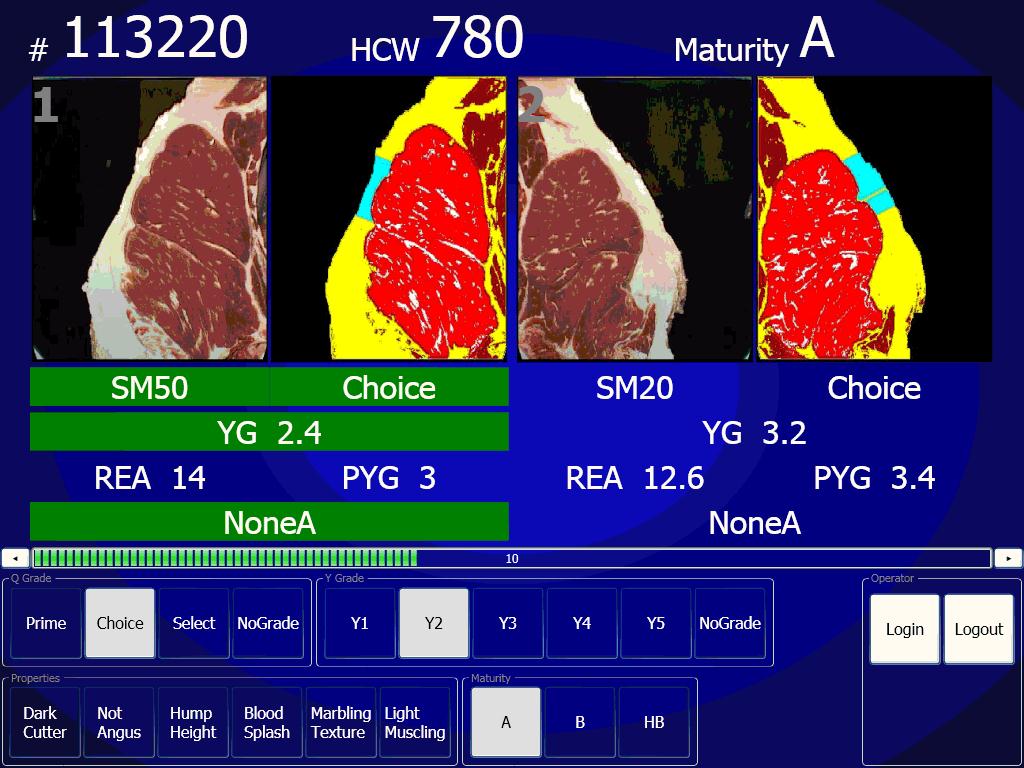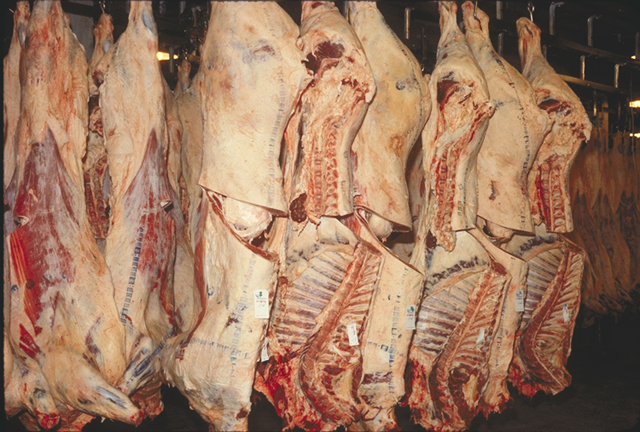|
Meat Inspection
Meat inspection is a crucial part of food safety measures and encompasses all measures directed towards the prevention of raw and processed meat spoilage. Relevant regulations include: *Federal Meat Inspection Act *Wholesome Meat Act These are enacted by *Food Safety and Inspection Service *Canadian Food Inspection Agency *Safe Meat and Poultry Inspection Panel amongst others. Scientific counsel is provided by institutions like the American Meat Science Association and similar. See also *American Meat Institute *Food grading *Meat industry The meat industry are the people and companies engaged in modern industrialized livestock agriculture for the production, packing, preservation and marketing of meat (in contrast to dairy products, wool, etc.). In economics, the meat industry is ... Meat industry {{meat-stub ... [...More Info...] [...Related Items...] OR: [Wikipedia] [Google] [Baidu] |
Canadian Food Inspection Agency
The Canadian Food Inspection Agency (CFIA; french: Agence canadienne d'inspection des aliments) is a regulatory agency that is dedicated to the safeguarding of food, plants, and animals (FPA) in Canada, thus enhancing the health and well-being of Canada's people, environment and economy. The agency is governed by the Minister of Agriculture and Agri-Food and Minister of Health. The agency was created in April 1997 by the ''Canadian Food Inspection Agency Act'' for the purpose of consolidating the delivery of all federal food safety, animal health, and plant health regulatory programs in Canada. As such, the CFIA was established by combining and integrating the related inspection services of three separate federal government departments: * Agriculture and Agri-Food Canada, * Fisheries and Oceans Canada, and * Health Canada. Role and responsibilities The agency is part of the larger federal public service. According to the CFIA statement of values, science is the basis for r ... [...More Info...] [...Related Items...] OR: [Wikipedia] [Google] [Baidu] |
Food Grading
Food grading involves the inspection, assessment and sorting of various foods regarding quality, freshness, legal conformity and market value.Saravacos, George D.; Maroulis, Zacharias B. (2011''Food Process Engineering Operations'' CRC Press. pp. 198-199. Sivasankar, B. (2002)Processing and Preservation'' PHI Learning Pvt. Ltd. pp. 175-177. Food grading is often done by hand, in which foods are assessed and sorted. Machinery is also used to grade foods, and may involve sorting products by size, shape and quality. For example, machinery can be used to remove spoiled food from fresh product. By food type Beef Beef grading in the United States is performed by the United States Department of Agriculture's (USDA) Agricultural and Marketing Service. There are eight beef quality grades, with U.S. Prime being the highest grade and U.S. Canner being the lowest grade. Beef grading is a complex process. Beer In beer grading, the letter "X" is used on some beers, and was traditional ... [...More Info...] [...Related Items...] OR: [Wikipedia] [Google] [Baidu] |
American Meat Institute
The American Meat Institute (AMI) was the oldest and largest trade association representing the U.S. meat and poultry industry. In 2015, it was merged into the North American Meat Institute (NAMI). Overview Founded in 1906 in Chicago as the American Meat Packers Association, the American Meat Institute is a trade association that provides leadership to advance the interests of America’s meat and poultry packing and processing companies, and the 526,000 workers they employ, before government, media, and the public. The organization was created shortly after the passage of the Federal Meat Inspection Act and spent much its early years helping meat packers adjust to new inspection requirements. AMI moved its headquarters in 1979 to Washington, DC, where it remains today. AMI’s membership ranged from large, publicly traded companies that employ thousands to small businesses. More than half of AMI’s members were small, family-owned businesses employing fewer than 100 individu ... [...More Info...] [...Related Items...] OR: [Wikipedia] [Google] [Baidu] |
American Meat Science Association
American(s) may refer to: * American, something of, from, or related to the United States of America, commonly known as the "United States" or "America" ** Americans, citizens and nationals of the United States of America ** American ancestry, people who self-identify their ancestry as "American" ** American English, the set of varieties of the English language native to the United States ** Native Americans in the United States, indigenous peoples of the United States * American, something of, from, or related to the Americas, also known as "America" ** Indigenous peoples of the Americas * American (word), for analysis and history of the meanings in various contexts Organizations * American Airlines, U.S.-based airline headquartered in Fort Worth, Texas * American Athletic Conference, an American college athletic conference * American Recordings (record label), a record label previously known as Def American * American University, in Washington, D.C. Sports teams Soccer * Ba ... [...More Info...] [...Related Items...] OR: [Wikipedia] [Google] [Baidu] |
Meat Science
Meat is animal flesh that is eaten as food. Humans have hunted, farmed, and scavenged animals for meat since prehistoric times. The establishment of settlements in the Neolithic Revolution allowed the domestication of animals such as chickens, sheep, rabbits, pigs, and cattle. This eventually led to their use in meat production on an industrial scale in slaughterhouses. Meat is mainly composed of water, protein, and fat. It is edible raw but is normally eaten after it has been cooked and seasoned or processed in a variety of ways. Unprocessed meat will spoil or rot within hours or days as a result of infection with, and decomposition by, bacteria and fungi. Meat is important to the food industry, economies, and cultures around the world. There are nonetheless people who choose to not eat meat (vegetarians) or any animal products (vegans), for reasons such as taste preferences, ethics, environmental concerns, health concerns or religious dietary rules. Terminology The w ... [...More Info...] [...Related Items...] OR: [Wikipedia] [Google] [Baidu] |
08650jfBridges River Boats Districts Meycauayan City Bulacanfvf 08
__NOTOC__ Year 865 ( DCCCLXV) was a common year starting on Monday (link will display the full calendar) of the Julian calendar. Events By place Europe * King Louis the German divides the East Frankish Kingdom among his three sons. Carloman receives Bavaria (with more lands along the Inn River). He gives Saxony to Louis the Younger (with Franconia, and Thuringia) and Swabia (with Raetia) to Charles the Fat. Louis arranges marriages into the local aristocracy, for his sons to hold important territories along the frontiers. * King Lothair II, threatened with excommunication, takes back his first wife, Teutberga. She expresses her desire for an annulment, but this is refused by Pope Nicholas I. * Boris I, ruler (''knyaz'') of the Bulgarian Empire, suppresses a revolt, and orders the execution of 52 leading boyars, along with their whole families. Britain * The Great Heathen Army (probably no more than 1,000 men) of Vikings, led by Ivar the Boneless and Halfdan Ragnarsso ... [...More Info...] [...Related Items...] OR: [Wikipedia] [Google] [Baidu] |
Safe Meat And Poultry Inspection Panel
The Safe Meat and Poultry Inspection Panel is an advisory panel to review and evaluate meat inspection policies and proposed changes that the 1996 farm bill The Federal Agriculture Improvement and Reform Act of 1996 (P.L. 104-127), known informally as the Freedom to Farm Act, the FAIR Act, or the 1996 U.S. Farm Bill, was the omnibus 1996 farm bill that, among other provisions, revises and simplifies d ... (P.L. 104–127, Sec. 918) permanently authorized by amendment to the federal meat and poultry inspection statutes. Provisions in annual USDA appropriations laws since 1996 have prohibited the department from actually establishing the advisory panel. References *{{CRS, article = Report for Congress: Agriculture: A Glossary of Terms, Programs, and Laws, 2005 Edition, url = http://ncseonline.org/nle/crsreports/05jun/97-905.pdf, author= Jasper Womach United States Department of Agriculture Poultry farming in the United States Meat inspection Veterinary medicine in the United ... [...More Info...] [...Related Items...] OR: [Wikipedia] [Google] [Baidu] |
Food Safety And Inspection Service
The Food Safety and Inspection Service (FSIS), an agency of the United States Department of Agriculture (USDA), is the public health regulatory agency responsible for ensuring that United States' commercial supply of meat, poultry, and egg products is safe, wholesome, and correctly labeled and packaged. The FSIS draws its authority from the Federal Meat Inspection Act of 1906, the Poultry Products Inspection Act of 1957 and the Egg Products Inspection Act of 1970. The FSIS also acts as a national health department and is responsible for the safety of public food-related establishments as well as business investigation. Food products under the jurisdiction of the FSIS, and thus subject to inspection, are those that contain more than 3% meat or 2% poultry products, with several exceptions, and egg products (liquid, frozen or dried). Shell eggs, meat and poultry products not under the jurisdiction of the FSIS are under the jurisdiction of the United States Food and Drug Administr ... [...More Info...] [...Related Items...] OR: [Wikipedia] [Google] [Baidu] |
Food Safety
Food safety (or food hygiene) is used as a scientific method/discipline describing handling, preparation, and storage of food in ways that prevent food-borne illness. The occurrence of two or more cases of a similar illness resulting from the ingestion of a common food is known as a food-borne disease outbreak. This includes a number of routines that should be followed to avoid potential health hazards. In this way, food safety often overlaps with food defense to prevent harm to consumers. The tracks within this line of thought are safety between industry and the market and then between the market and the consumer. In considering industry to market practices, food safety considerations include the origins of food including the practices relating to food labeling, food hygiene, food additives and pesticide residues, as well as policies on biotechnology and food and guidelines for the management of governmental import and export inspection and certification systems for foods ... [...More Info...] [...Related Items...] OR: [Wikipedia] [Google] [Baidu] |
Beef Inspection USDA
Beef is the culinary name for meat from cattle (''Bos taurus''). In prehistoric times, humankind hunted aurochs and later domesticated them. Since that time, numerous breeds of cattle have been bred specifically for the quality or quantity of their meat. Today, beef is the third most widely consumed meat in the world, after pork and poultry. As of 2018, the United States, Brazil, and China were the largest producers of beef. Beef can be prepared in various ways; cuts are often used for steak, which can be cooked to varying degrees of doneness, while trimmings are often ground or minced, as found in most hamburgers. Beef contains protein, iron, and vitamin B12. Along with other kinds of red meat, high consumption is associated with an increased risk of colorectal cancer and coronary heart disease, especially when processed. Beef has a high environmental impact, being a primary driver of deforestation with the highest greenhouse gas emissions of any agricultural product. ... [...More Info...] [...Related Items...] OR: [Wikipedia] [Google] [Baidu] |
Wholesome Meat Act
The Wholesome Meat Act (also called "Equal To" law) is a United States federal law passed by the 90th United States Congressional session and enacted into law by United States President Lyndon B. Johnson on December 15, 1967, amending the Federal Meat Inspection Act of 1906 which established a statute for federal meat inspection programs. It requires that states have inspection programs "equal to" that of the federal government which are administered by the Food Safety and Inspection Service (FSIS) of the United States Department of Agriculture (USDA). See also * Humane Slaughter Act References External links"Meat Inspection"at the Texas A&M University Texas A&M University (Texas A&M, A&M, or TAMU) is a public, land-grant, research university in College Station, Texas. It was founded in 1876 and became the flagship institution of the Texas A&M University System in 1948. As of late 2021, T ... 1967 in law 1967 in American law Food law 90th United States Congress Un ... [...More Info...] [...Related Items...] OR: [Wikipedia] [Google] [Baidu] |

.jpg)


.jpg)
